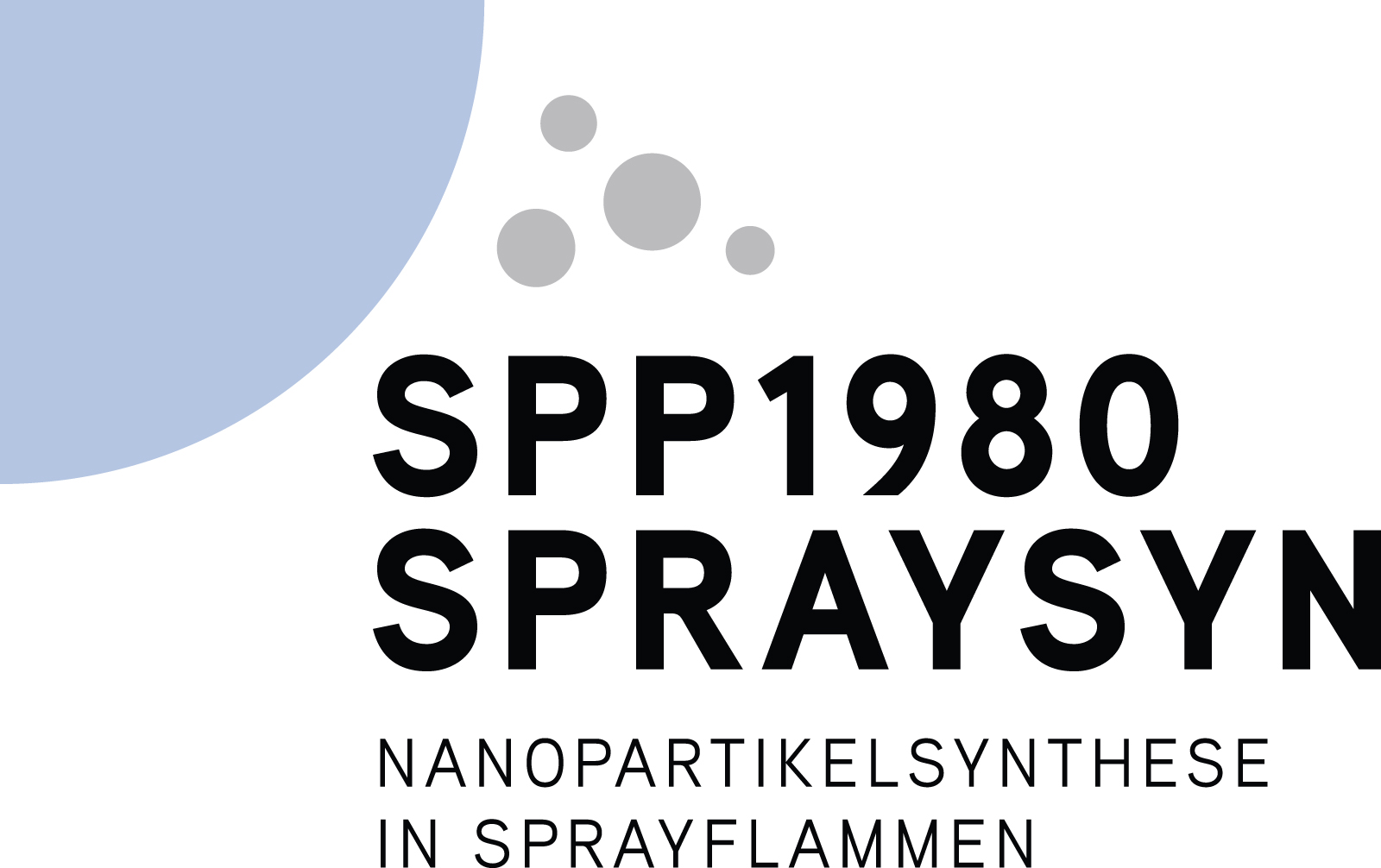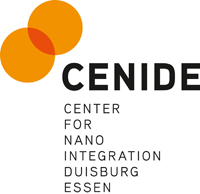Research approach
The synthesis of nanoparticles in spray flames passes through a sequence of processes that are determined to a great extent of interactions at the molecular level and of ultrafast physical and chemical processes. This process chain includes elementary processes in the spray (largely dominated by molecular interaction and fluid properties), in the flame (dominated by ultrafast radical reactions and their interaction with flow processes), and the particles (surface growth, coalescence, and aggregation). In a spray flame, these processes are not fully separated in space and time. Due to the different time scales of spray formation and vaporization (slow), precursor decomposition (fast), flame chemistry (ultra-fast), and particle formation (with temperature-dependent competition of coalescence and aggregation) the respective processes overlap and interact. Therefore, spray-flame synthesis provides a much higher degree of complexity than flame synthesis of nanomaterials based on homogeneously premixed gases. Moreover, precursor- and flame chemistry are strongly coupled through the catalytic effects of many metal species and reactive particle surfaces. These effects are relevant due to turbulence and recirculating flows and this interaction further complicates the prediction of local temperature variations. Therefore, only a coupled experimental/numerical approach that is at the core of the SPP1980 can lead to success.
For the successful description of the overall process, close collaboration of various disciplines is required. The individual projects target complementary – but closely interlinked – topics within the Priority Program. Many of these issues are for the first time considered in the context of particle synthesis and thus connected in the context of this topic.
The overarching objectives
- Comprehensive understanding of spray-flame synthesis based on a physically sound modeling of the sub-processes
- Creation of methods for multi-scale simulation for designing, scaling, and optimizing spray-flame synthesis systems
- Design of economic and sustainable processes by substituting raw materials towards metal salts instead of organometallic substances, and inexpensive solvents (possibly also water)
- Upgrading the spray-flame synthesis for the inexpensive production of highly specific the nanoscale materials on an industrial scale
Short-term goals (first project phase)
- Developing and establishing a standard experiment configuration (SpraySyn burner) taking into account the practical relevance, reproducible production, measurability, and simulatability
- Building an extensive, well-documented and publicly available data set for selected operating conditions (benchmarking)
- Developing and providing metrological approaches
- Development and deployment of simulation methods
- Understand central sub-processes:
- Spray formation and evaporation precursor-laden droplets
- Interaction of the precursors with the flame chemistry: Investigation of atomic/molecular intermediates and their influence on the reaction mechanisms
- Impact of droplets and particle loading on the turbulent flow
Medium-term goals (second project phase)
- Use of the SpraySyn approach to the design of optimized and scaled synthesis plants that are then used to validate the simulation method
- Use of the SpraySyn approach for modular and combined synthesis pathways towards the generation of complex materials
Long-term goals (visions)
- Development of process design rules for industrial implementation
- Developing integrated spray-flame processes, such as by supporting the spray flame synthesis by plasma processes
- Evaluating the possibility of a carbon-free spray-flame synthesis to fully exclude the formation of carbides and carbon impurities
- Transfer and generalize the scheme of interaction between theory and experiment as developed in SPP1980 towards more complex issues of material synthesis not limited to spray-flame synthesis



